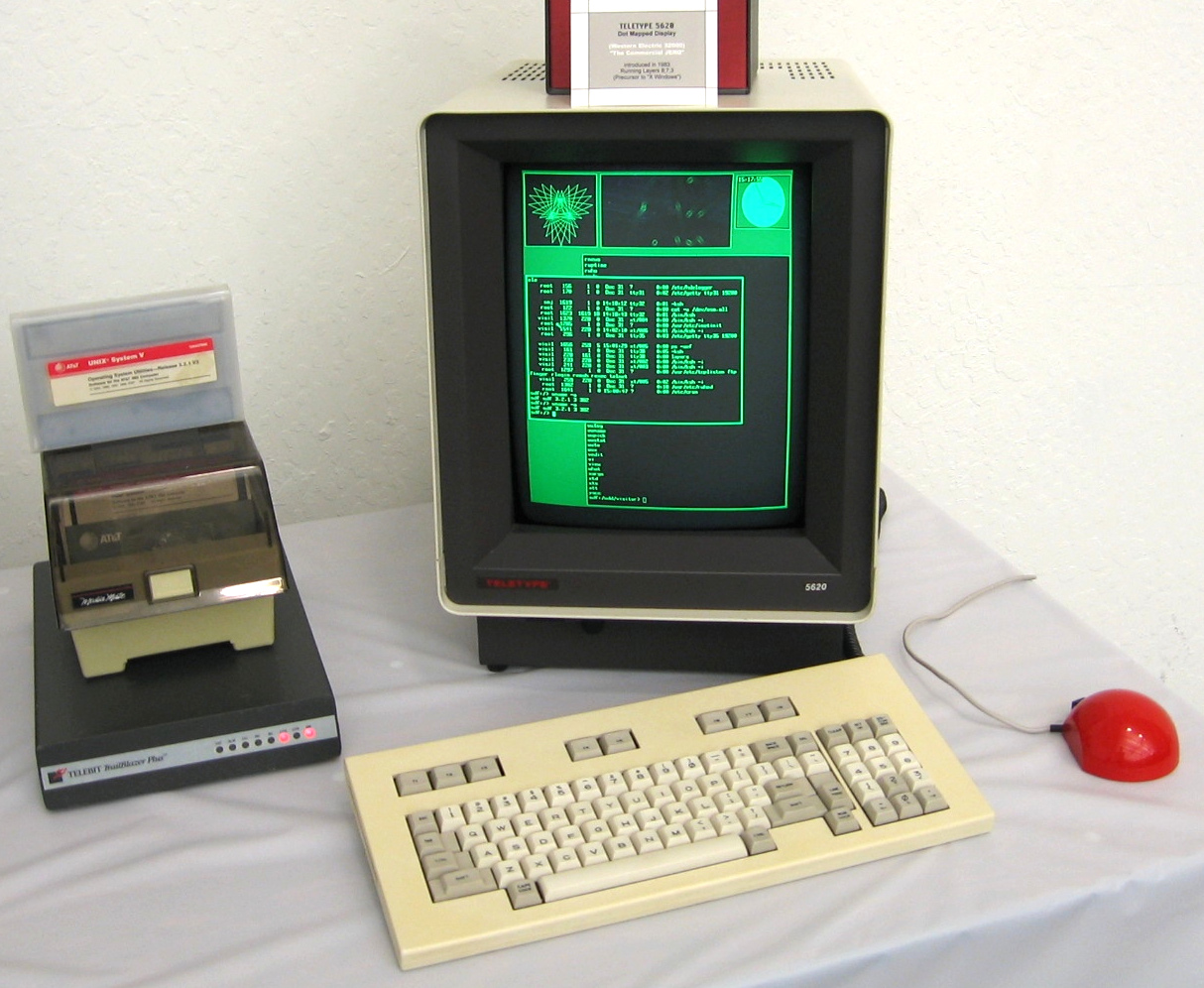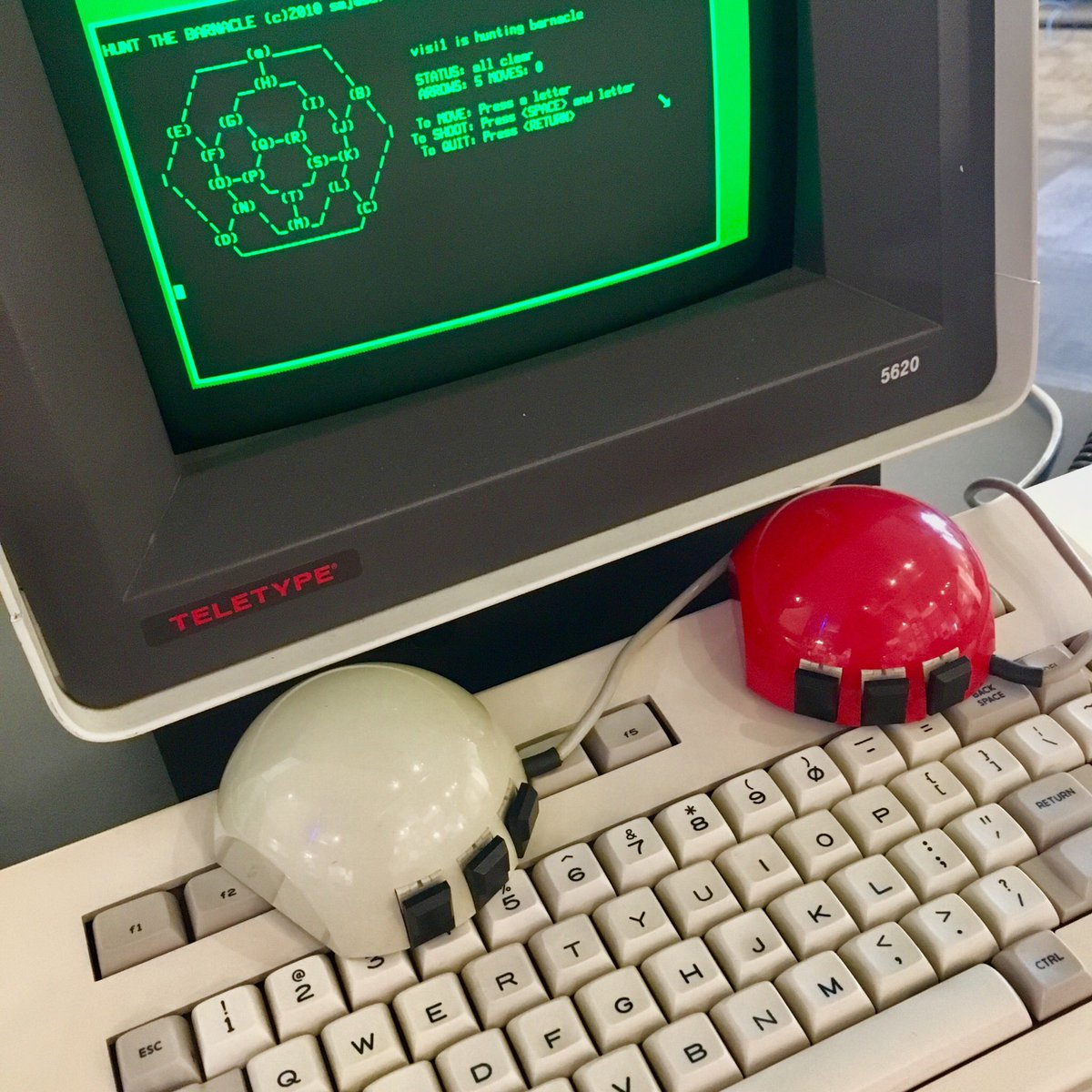Teletype 5620 DMD, Blit (1984)
Blit terminal was a programmable bitmap graphics terminal designed by Rob Pike and Bart Locanthi Jr. of Bell Labs in 1982.
Model 5620 DMD (dot-mapped display) is created in 1984.
They are sold by AT&T and Teletype Corp.

15 inch display, 800×1024×1 resolution (66×88 characters in the initial text mode), interlaced at 30 Hz


- https://youtu.be/Pr1XXvSaVUQ
- BLIT: an early Windowed Graphic Interface from Bell Labs - AT&T Archives
The Blit (originally named the Jerq!) was an early graphical user interface, connected to a UNIX computer. Inspired by the Xerox Alto from the early 1970s, creators Rob Pike and Bart Locanthi wanted to make a graphics machine for use at Bell Labs that would have the usability of the Xerox, but with the processing power of a 1981 computer. Created using a Motorola microprocessor instead of a Bell one, the machine would be retooled for the commercial market (business market, because it was still expensive) as the AT&T 5620, which came out in 1984 — using a Western Electric WE32000 microprocessor. The Blit had a vertically-oriented display and an early mouse peripheral; this video explains how it worked.
In computing, the Blit was a programmable bitmap graphics terminal designed by Rob Pike and Bart Locanthi Jr. of Bell Labs in 1982.
The Blit programmable bitmap graphics terminal was designed by Rob Pike and Bart Locanthi Jr. of Bell Labs in 1982. The Blit technology was commercialized by AT&T and Teletype. In 1984, the DMD (dot-mapped display) 5620 was released,[1] followed by models 630 MTG (multi-tasking graphics) in 1987 and 730 in 1989. The 5620 used a Western Electric 32000 processor (aka Bellmac 32) and had a 15 inch green phosphor display with 800×1024×1 resolution (66×88 characters in the initial text mode) interlaced at 30 Hz. The 630 and 730 had Motorola 68000 processors and a faster 1024×1024×1 monochrome display (most had orange displays, but some had white or green displays).
[2019-07-12 Wikipedia]